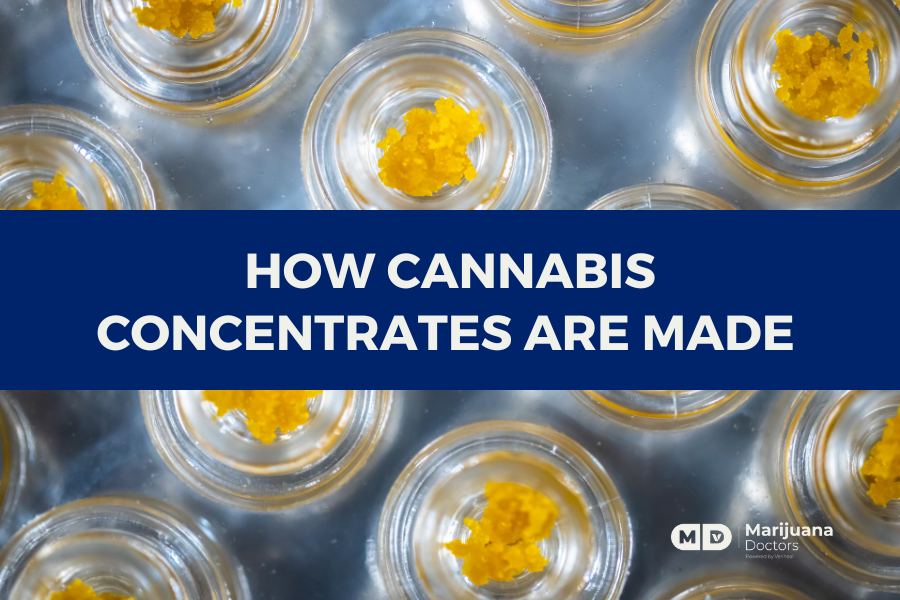
Cannabis, throughout history, has mainly consisted of dried plant material that was smoked, the occasional edible, and cannabis tinctures for the most part. Today, however, in legal cannabis markets, there are a plethora of cannabis-infused and cannabis-derived products available for purchase. With inhalation being a tried-and-true method of consumption and the popularity of vaping on the rise, one of the most popular products is what is known as cannabis concentrates. Cannabis concentrates are sometimes known as cannabis extracts or simply as dabs or wax.
Whatever you choose to call it, concentrates are an excellent name for cannabis extracts as they contain concentrated levels of cannabinoids and terpenes. Cannabis extracts offer a potent way to consume cannabis for both recreational consumers as well as medical cannabis patients. These products are highly sought after by cannabis patients due to their high potency. This is because this high concentration of cannabinoids, such as THC or CBD, is often required for patients to find relief from medical ailments such as chronic pain, depression, epilepsy, and more.
It is important to remember that not all concentrates are created equal. The extraction technique utilized has a very deep impact on the quality, flavor, consistency, and many other aspects of the final product. Cannabinoids, terpenes, and other compounds can be extracted from the cannabis plant using various extraction techniques. Of the many different extraction techniques, there are two basic categories of cannabis extraction methods, and those are solvent and solventless. Let’s explore.
Solvent extraction methods use a liquid or gas known as a solvent to dissolve the resin glands (trichomes) from the cannabis plant material. The solvent is then evaporated or purged, leaving behind a concentrated cannabis extract. The most commonly utilized solvents include butane, propane, ethanol, and CO2. Some of the most common solvent-based products are shatter, wax, budder, crumble, live resin, and distillate.
The primary difference between these products is their consistency, THC content, and terpene concentrations. Of the solvent-based cannabis concentrates on the market, some of the most sought-after are live resin and distillate. Live resin is a favorite because it retains the natural terpene and cannabinoid profiles of the plant at the time of harvest. Distillate, however, is desired primarily for its high THC concentration as it is one of the highest testing forms of cannabis concentrates made utilizing solvent extraction methods.
Cannabis extracts made utilizing solvent extraction methods have their own unique advantages and disadvantages.
Solventless extraction methods, as you might have guessed, do not use a solvent to extract the trichomes from the cannabis plant material. Instead, they use more natural methods, such as agitation, pressure, ice, or heat, to separate the trichomes from the plant matter. Solventless extraction has been utilized by individuals in cultures around the globe for centuries to produce things such as hash, kief, bubble hash, and more. Other forms of solventless concentrates include rosin, live rosin, and dry shift hash, to name a few. If you have ever heard of cold-pressed extraction, ice-water extraction, or heat-pressed extraction, you have heard about solvent-less extraction.
Like concentrates made utilizing solvent-based extraction techniques, cannabis extracts made utilizing solventless extraction methods also have their own unique advantages and disadvantages.
Disadvantages
Cannabis concentrates are a diverse category of products that offer different experiences and benefits for consumers. Whether you prefer solvent or solventless extraction methods depends on your personal preference and needs. However, it is important to be aware of how cannabis concentrates are made and what differences they have in terms of quality, safety, and effects.
No Information on MarijuanaDoctors.Com should be used to diagnose, treat, prevent or cure any disease or condition. You can view our Full Disclaimer here.